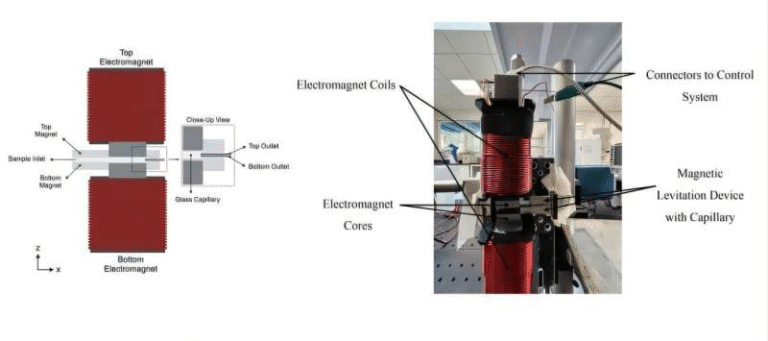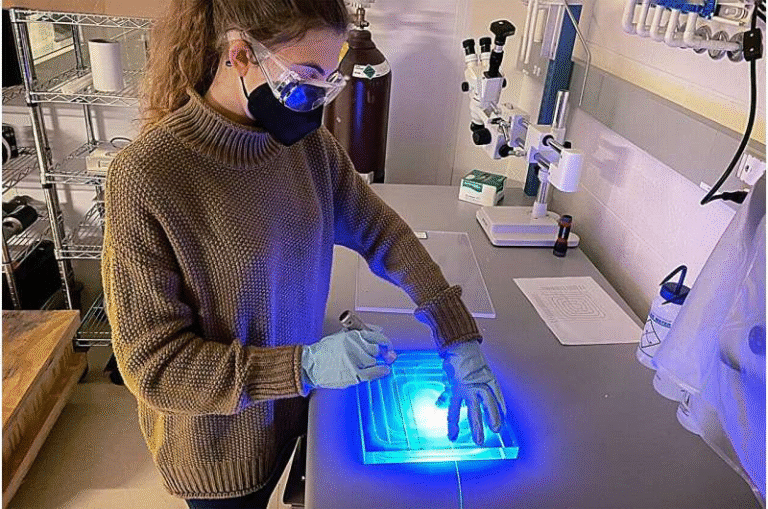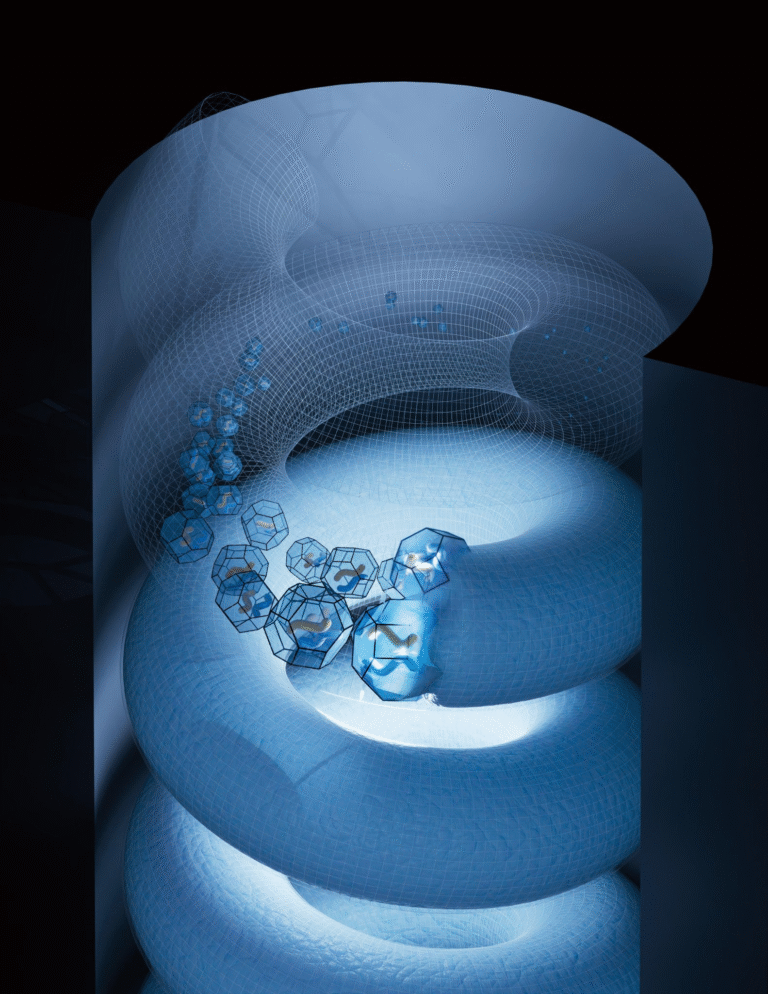Engineers Boost Ultraviolet Photon Detection by Optimising Avalanche Photodiodes

A team led by Jonathan Schuster at the DEVCOM Army Research Laboratory has unveiled a significant advancement in the design of avalanche photodiodes (APDs) for ultraviolet-light detection. Their work addresses the long‐standing challenge of detecting photons in the near-ultraviolet (NUV) range by using a highly refined simulation model and carefully configured device architectures.
The heart of this development lies in the device type called a Geiger-mode avalanche photodiode (GM-APD): a single‐photon sensor that, once biased above its breakdown voltage, enables internal carrier multiplication via impact ionisation and produces a detectable electrical pulse whenever a photon is absorbed. To operate effectively in the NUV region, a GM-APD must satisfy two critical requirements: first, a high probability of absorbing the incoming photons (commonly expressed as the unity-gain quantum efficiency (QE)) and second, strong electric fields within the multiplication layer to trigger reliable avalanche breakdown.
For many years, APDs made from 4H‑silicon carbide (4H-SiC) have dominated in the deep-ultraviolet (DUV) region around ~280 nm, thanks to SiC’s wide band gap, robust high-field performance and resistance to harsh environments. However, as the target wavelength shifts toward longer wavelengths (i.e., beyond ~300 nm into the NUV), photon absorption in 4H-SiC decreases sharply, causing a drop in QE. To counter that, designers have resorted to much thicker absorber layers (on the order of tens of microns vs. the few microns in standard PIN structures). But the thicker layers impose substantial design and fabrication complications.
The Schuster-team developed a numerical model featuring a calibrated 4H-SiC material library to simulate key parameters—optical absorption coefficients, carrier transport lengths, impact ionisation coefficients, electric‐field distributions, doping profiles and layer thickness trade-offs. With this model they explored two different device architectures under the “Separate Absorption, Charge, and Multiplication” (SACM) paradigm:
- A Non‐Reach‐Through (NRT) SACM structure, and
- A Reach‐Through (RT) SACM structure.
Each architecture carries distinct design challenges and advantages when optimizing for NUV photon detection.
In their simulation results, the team found that the NRT‐SACM devices could achieve a unity-gain QE of up to ~32 % at a photon wavelength of 340 nm. Meanwhile, the RT-SACM devices could push the unity-gain QE up to ~71 % at the same 340 nm wavelength—all while maintaining the high electric fields needed in the multiplication layer for Geiger-mode operation.
Why the difference? In the NRT architecture the dominant constraints include ensuring a long minority‐carrier diffusion length in the absorber layer while minimising potential barriers at the absorber/charge‐layer (AL/CL) interface that might impede carrier transport. In contrast, the RT architecture demands precise control of the total charge in the charge layer (CL) so that the absorber layer retains a non-zero electric field (for carrier sweep) and the multiplication layer maintains a sufficiently large field for avalanche breakdown. In other words, the trade-off between absorber-layer thickness, doping, field distribution and interface barrier becomes more pronounced in RT designs.
Another key takeaway from the study is that the CL design (especially its thickness and doping) is particularly inflexible: small deviations in fabrication (thickness variation, doping fluctuations) can degrade performance significantly. This underlines the importance of tight process control when transitioning from model to physical device.
What makes all this especially relevant is the expanding suite of applications that depend on single‐photon or low-photon‐flux detection in the UV and NUV regions. These include “solar-blind” ultraviolet detection (where sensors are insensitive to the bulk of solar radiation but capture specific UV signals), combustion and flame monitoring, environmental UV sensors, remote sensing (including space or planetary missions), UV lidar, even quantum optical measurements in the ultraviolet regime. Because 4H-SiC offers high temperature tolerance, radiation resistance and ruggedness, improving its NUV performance opens doors for deploying GM-APDs in harsher or more remote settings.
In summary, the research offers a roadmap: by employing a detailed simulation toolkit and comparing NRT vs RT architectures, device designers can target higher QE at longer UV wavelengths—without sacrificing avalanche performance. The result is a potential leap in UV detector sensitivity, leading to more efficient, reliable photon sensors for a variety of challenging environments. The device physics is complex, but the message is clear: thicker absorber layers + SACM architecture + precise charge layer engineering = improved NUV photon capture in 4H-SiC GM-APDs.
A bit of background on avalanche photodiodes and 4H-SiC
Avalanche photodiodes (APDs) function by converting incident photons into electron–hole pairs via absorption. If the device is biased above avalanche breakdown, those carriers trigger a cascade of impact ionisations—an “avalanche” of charges—that produces a measurable current pulse. Operating in Geiger mode (i.e., above breakdown) allows single‐photon sensitivity, but demands stringent control of dark counts, afterpulsing, timing jitter and noise. For effective detection, you need both efficient absorption (so photons are captured) and strong internal multiplication.
4H-SiC is a wide-bandgap semiconductor with a band gap of around 3.26 eV in its 4H polytype. Because of its high breakdown field, good thermal/radiation tolerance and availability in device‐ready substrate forms, it has been a strong candidate for UV photodetectors. However, at wavelengths approaching the indirect band gap (i.e., around or above ~300 nm), its absorption coefficient falls off. That means photons penetrate deeper before being absorbed, so thin absorbers (typical in visible/infrared detectors) won’t suffice if high QE is desired.
In classic PIN or reach‐through PIN photodiodes designed for UV, absorber layers might be only a few microns thick. But to capture NUV photons in 4H-SiC, absorber layers must be tens of microns thick—to increase the probability that photons are absorbed rather than passing through. That change triggers shifts in device geometry, doping, layer layout, and fabrication, which in turn affects dark current, carrier transit times, junction fields, interface barriers and multiplication region design.
The SACM architecture (Separate Absorption, Charge, Multiplication) effectively decouples those three functions: the absorber layer optimised for photon absorption, the charge layer for electric‐field shaping and carrier transport into the multiplication layer, and the multiplication layer designed solely for avalanche gain. This decoupling allows more flexibility and optimisation than traditional PIN designs—but at the cost of increased complexity and tighter fabrication tolerances.
Why this matters and what to watch out for
From a practical viewpoint, improving unity-gain QE to ~70 % at 340 nm is a big stride forward. It means that more of the incident photons in the NUV region are converted into carriers that can trigger avalanches—directly translating into better photon detection efficiency, lower energy thresholds, and potentially smaller, more compact sensor systems. Applications spanning environmental monitoring, space science, lidar, flame detection, quantum optics and secure UV communications can all benefit.
However, achieving those simulation numbers in actual manufactured devices is non-trivial. The team emphasises that the charge layer (CL) design is highly sensitive to variations. In real fabrication, maintaining precise absorber thicknesses, doping gradients, interface quality, layer uniformity, backside absorber architectures (which might differ from traditional front‐side ones) is always a challenge. Moreover, once you have thick absorbers you may also face increased device capacitance, longer carrier transit times, possibly increased dark current or noise, and thermal/field stress issues.
Thus, while the simulation work provides a powerful design toolkit and sets out design “rules of thumb” (for example, trade-offs between diffusion length vs interface barrier in NRT, charge layer total charge vs field distribution in RT) it remains to be seen how closely fabricated devices can approach these idealised numbers and how they perform in real‐world conditions (dark count, afterpulsing, timing jitter, reliability, ruggedness).
Another watch-point: competing materials. While 4H-SiC is promising, other wide band gap materials (e.g., AlGaN, GaN, diamond) are also vying for UV/NUV‐sensitive photodetector applications. How the matured 4H-SiC SACM GM-APD technology stacks up in terms of cost, yield, area, packaging and system-integration will be a key factor in adoption.
Finally, extension beyond ~340 nm or toward visible wavelengths remains a further challenge. As wavelengths increase the absorption coefficient continues to decline, and trade-offs become tougher. The engineering margin may shrink, and other materials or architectures may have to be considered.
In conclusion, the research from Schuster’s team marks a clear step forward in ultraviolet photon detection technology. By leveraging precise modelling and discerning architectural choice (NRT vs RT SACM) they show a viable path to much higher quantum efficiencies in the NUV region for 4H-SiC GM-APDs. For anyone working in photon detection, UV sensing, space instrumentation or quantum photonics, this work offers both inspiration and a roadmap: careful simulation, design discipline, and fabrication precision can translate into real sensor performance gains.
Research Paper Link: Design Challenges in Binary 4H-SiC NUV-Enhanced SACM APDs





